Water hyacinth, a familiar sight on the surfaces of ponds, rivers, and lakes, may appear innocuous with its vibrant green leaves and exquisite purple flowers. Yet, concealed beneath its picturesque facade are a plethora of advantages and disadvantages that might have escaped your notice. In this article, we will explore water hyacinth advantages and disadvantages you might not know.
Contents [hide]
1. Water Hyacinth Overview
Water hyacinth was introduced to our country in 1905 and originates from South American countries. Water hyacinth is a type of aquatic plant that floats on the water’s surface. In Vietnam, water hyacinth grows vigorously in various provinces of the Mekong Delta region.
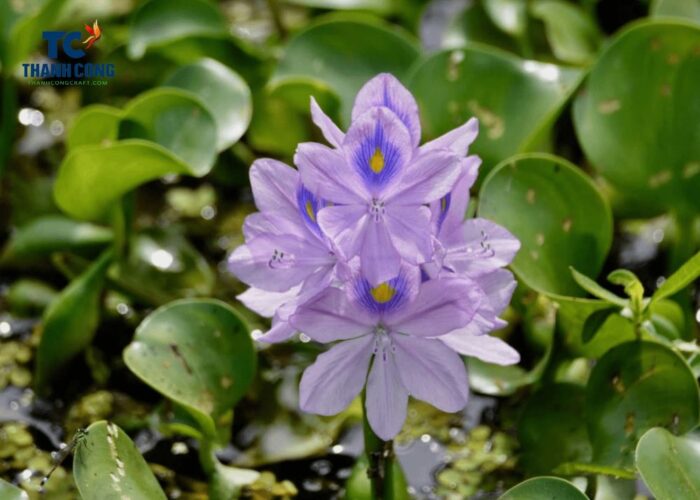
They are called water hyacinth because their oval-shaped leaves are wide, about 10 – 20 cm in width, thick, and shiny, resembling a vase or “bình” in Vietnamese. The inflated part of the leaf stem contains a lot of air, helping the plant float on the water’s surface. Water hyacinth flowers are fragrant and bloom densely in clusters, resembling small bells.
When the water hyacinth matures, its stalk rises above the water’s surface and produces flowers. The leaf stalks expand, and their spongy interiors allow the water hyacinth to float on the water’s surface. Its enlarged shape resembles a small vase, giving rise to its name. The flowers are often unevenly distributed and have a bluish-purple color. The roots of the water hyacinth can reach up to 1 meter in length, and they hang down into the water, resembling dark, fluffy feathers.
2. Advantages and benefits of water hyacinth
Despite its classification as a weed, water hyacinth offers a multitude of advantages to both humans and the environment, provided it is managed effectively. In terms of environmental impact, this plant plays a crucial role in mitigating water pollution and can be utilized for various purposes, including animal feed, compost, and bioenergy production.
Water hyacinth, as an aquatic plant, possesses a remarkable capacity to absorb lead from its surroundings, supporting its own growth. Consequently, it often thrives in heavily polluted rivers and serves as an indicator of river pollution levels. This plant significantly mitigates water pollution by absorbing substantial quantities of phosphorus and nitrogen from water contaminated with toxic waste materials.
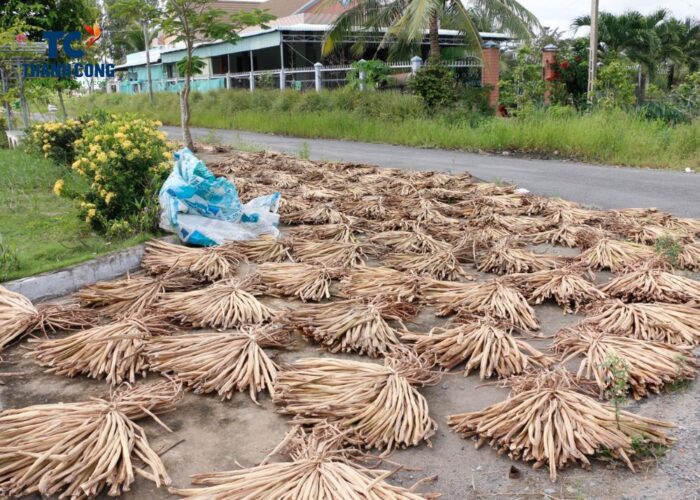
Furthermore, water hyacinth boasts a high nutritional value and is a valuable resource for animal feed and fertilizer production. Its rich mineral content and water composition make it an excellent choice for animal nutrition, particularly when blended with bran to enhance carbohydrate content.
Beyond its role as animal feed, effects of water hyacinth can be efficiently processed into organic fertilizer, owing to its high phosphorus, nitrogen, and potassium content. To utilize it as fertilizer, composting is necessary.
Water hyacinth benefits also serve as a sustainable source of natural energy. This plant can be transformed into bioenergy, a renewable fuel derived from plant biomass. Through this process, it generates biogas that can serve as a domestic fuel source.
The high hemicellulose and cellulose content of water hyacinth, approximately 43% and 17%, make it conducive to biogas production. The hydrolysis of these components yields methane and carbon dioxide, and its high water content, reaching up to 95%, along with its hollow tissue structure, facilitates gas production through fermentation.
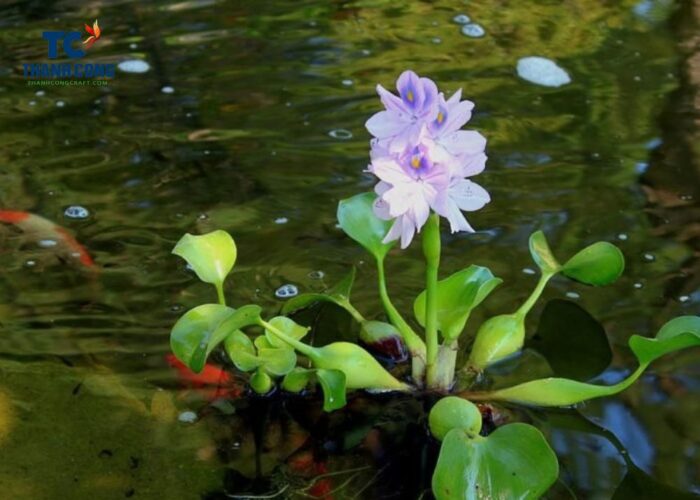
Water hyacinth is still used as a raw material for handicraft production. Water hyacinth is harvested when its stems reach a length of 60 to 90 cm. It is then cut at the base, the leaves are meticulously removed, and the plant is left to sun-dry until it withers. Subsequently, it undergoes anti-insect treatment and transforms into a primary material for crafting a wide array of water hyacinth products.
The products derived from water hyacinth exhibit remarkable diversity, spanning a broad spectrum of styles, sizes, and colors. These encompass straightforward items such as water hyacinth mats and rugs, as well as more intricate creations like: Water Hyacinth Baskets Wholesale, Water Hyacinth Handbag, Water Hyacinth Lampshade, Water Hyacinth Plates for Decor, Water Hyacinth Rug… Artisans employ various weaving techniques, such as grain-like, fishbone, tangled, or spider-like weaves, depending on customer preferences and the intended product.
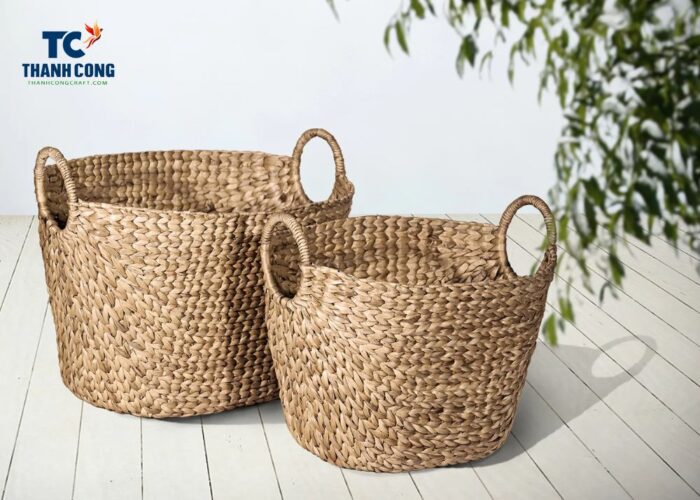
The value of water hyacinth products experiences a significant boost when they are adorned with embellishments like embroidery, painting, dried flowers, ribbons, beads, and more. Water hyacinth woven goods not only enjoy popularity within the domestic market but also hold the potential for export, contributing to the country’s foreign exchange earnings.
3. Disadvantages of water hyacinth
While water hyacinth offers numerous benefits, it also poses significant threats to the aquatic ecosystem when left uncontrolled. In fact, it is considered an invasive plant, which can have detrimental effects on the environment by reducing other species’ populations and overall biodiversity.
What problems do water hyacinth cause? The invasion of water hyacinth in aquatic ecosystems occurs because the plant requires substantial oxygen from the water for its evaporation process. This high oxygen demand can deplete the oxygen levels in the water, which is essential for fish survival.
Consequently, many fish may perish due to insufficient oxygen. Furthermore, water hyacinth can block sunlight from penetrating the water, hindering the reproduction process of fish and disrupting their habitats. It’s worth noting that both living and dead water hyacinths can cause environmental problems, such as river silting, which increases the risk of flooding.
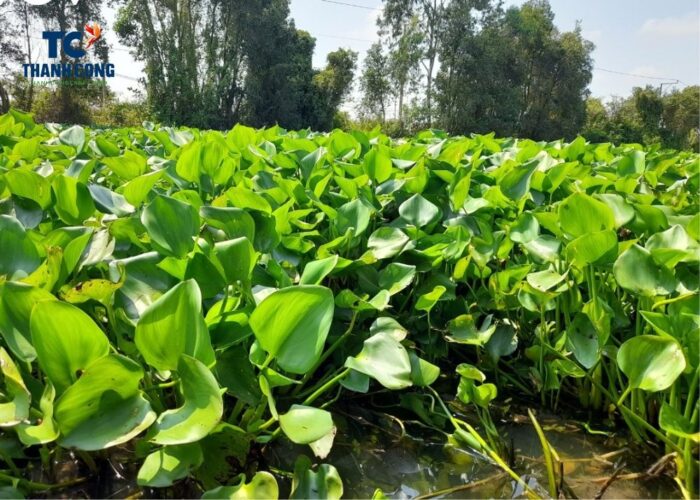
To harness the positive aspects of water hyacinth while mitigating its negative impacts, responsible management is crucial. This plant can be utilized to address river pollution, provide renewable energy sources, and contribute to agriculture.
However, strict population control measures are essential to prevent ecosystem destruction and maintain a balance between the plant’s growth and human needs. Achieving this balance is key to ensuring sustainable consumption and production practices.
In conclusion, water hyacinth advantages and disadvantages offer valuable advantages while posing significant challenges. Its ability to purify water, provide resources, and support wildlife must be weighed against its potential for invasive growth and disruption.
Effective management strategies and innovative utilization methods are essential to harness the benefits of water hyacinth while mitigating its negative impacts on ecosystems and economies.
If you have any further questions, don’t hesitate to send thanhcongcraft an email us at info@thanhcongcraft.com or message us at WhatsApp: +84967485411. Hope to serve you soon! Best regard!


